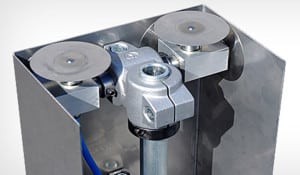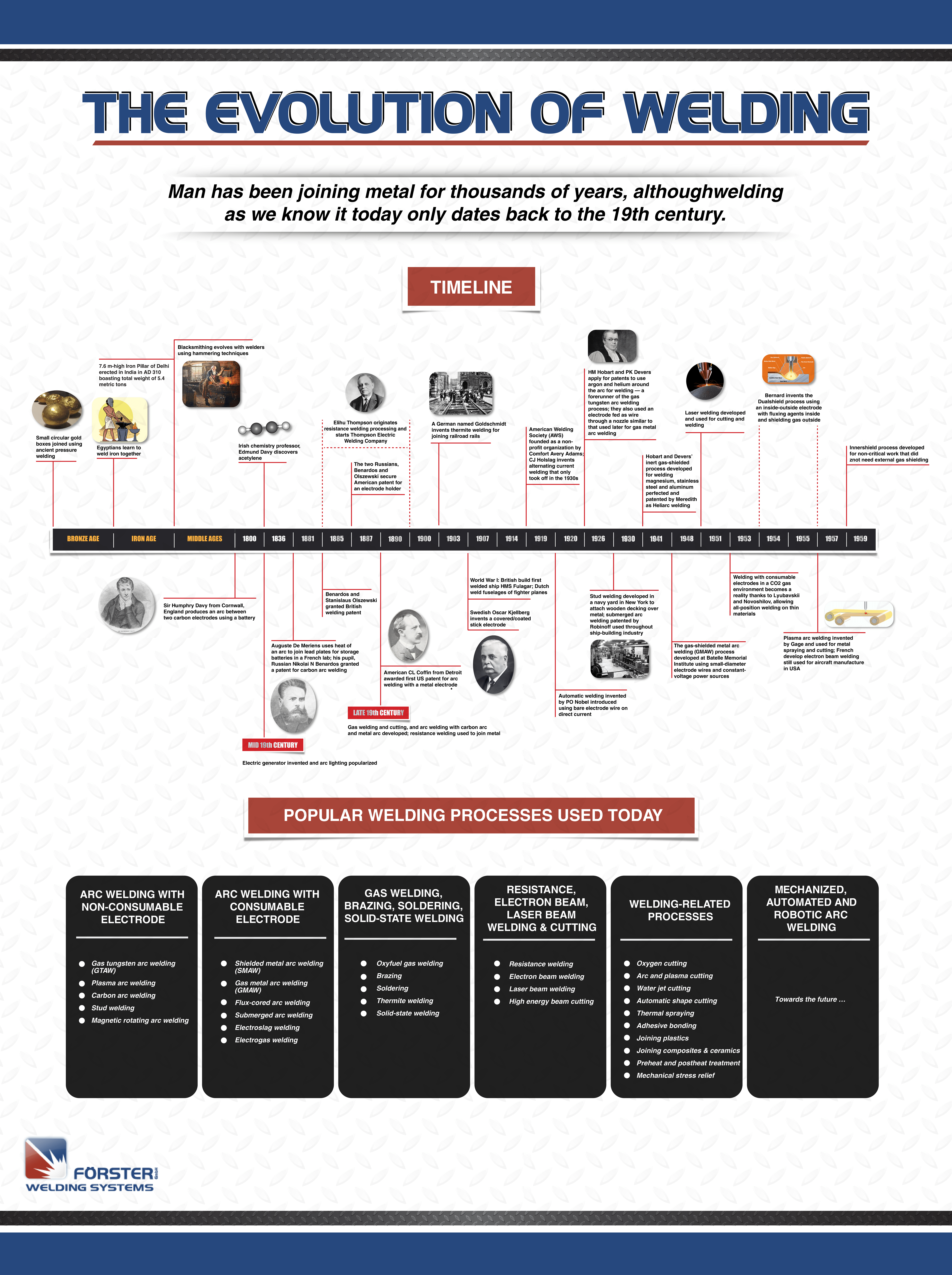Welding equipment has come a long way in the past few decades. Instead of being simply functional and utilitarian, today you can buy welding tables, jigs, and accessories that are designed ergonomically to improve working conditions, streamline the production process, and minimize downtime.
Forster America’s 3D modular welding tables are particularly effective because they can be adjusted for any welding project, making them ideal for all those jobs that require absolute precision. They also support various table parts and a number of components that enable welders to achieve custom solutions for jobs. This makes precise measuring, aligning, and correcting, or mechanically reworking complicated work pieces considerably easier.
How 3D Modular Welding Tables Work
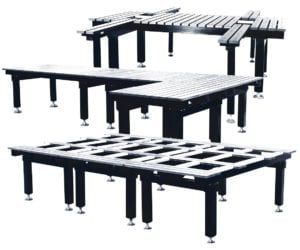 Forster’s 3D modular welding tables are constructed with slats comprising a T-slot system that is ideal for welding containers and casings and other complex designs. All you do is slide them sideways to accommodate the various accessories. These include:
Forster’s 3D modular welding tables are constructed with slats comprising a T-slot system that is ideal for welding containers and casings and other complex designs. All you do is slide them sideways to accommodate the various accessories. These include:
- 30 mm and 50 mm diameter clamping arms
- 30 mm and 50 mm steel pipes including several that are made specifically for 3D clamping
- A range of right-angled brackets of various sizes to meet a plethora of needs
- Horizontal, flat, quick-release, and C clamps that fulfill every possible clamping requirement
- A variety of stops including flat and universal stops
- A number of other elements including V-block supports, support feet that can accommodate two cast rails to extend the modular table, table extension plates, cover plates, and adjustable angle pieces that lock
They can also be used with horizontal rotary tables, vertical turntables, and lift tables that add to the versatility of the 3D modular design.
The lifting/tilting tables are particularly useful because they can be used with specialist jigs, and can be adjusted to any degree or height. The lift and turn function is operated hydraulically so there is absolutely no effort required on the part of the welder. Streamlining an operation has never been easier.
Specifications of 3D Modular Welding Tables
Forster America’s 3D tables are available in aluminum copper (Al/Cu) alloy for welding stainless steel and in gray cast iron. Design and sizes are the same for both:
- A width of 59 inches for a table that is 118 inches long
- A width of 47 inches for a range of lengths: 39, 71, 79, 95, and 118 inches.
The Al/Cu welding tables feature slatted tops that are made from a combination of carbon steel and an aluminum alloy. The benefit of using this type of table when working on stainless steel is that the clamping system prevents any contact with ferritic materials that would otherwise likely cause corrosion in the form of pitting or scratching. This makes them safe and reliable. Additionally, the material has a very high tensile strength combined with a low surface hardness. Because thermal conductivity is high, there is minimal danger of spatter attaching to the table.
The top of special gray cast iron welding tables is also highly resistant to spatter. The material has a very low expansion point when it is exposed to heat, which adds to reliability.
If you are interested in using 3D modular tables in your welding workshop, call Forster America today. We’ll help you choose the best solution for your needs.

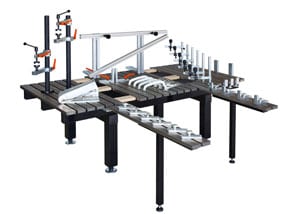 Forster America has a range of modular welding tables, including their signature modular 3D tables that are designed with an innovative T-slot top. These, in turn, accommodate the company’s unique 3D clamping system.
Forster America has a range of modular welding tables, including their signature modular 3D tables that are designed with an innovative T-slot top. These, in turn, accommodate the company’s unique 3D clamping system. Professional welding jobs must be accurate. Work pieces must be measured and cut according to the specified design, and then correctly aligned so that angles are right and welding (or even just initial setup) doesn’t have to be redone. This might sound like a no brainer, but it’s not unusual for welders to have to mechanically rework parts, if not all of a job, because setup was done incorrectly.
Professional welding jobs must be accurate. Work pieces must be measured and cut according to the specified design, and then correctly aligned so that angles are right and welding (or even just initial setup) doesn’t have to be redone. This might sound like a no brainer, but it’s not unusual for welders to have to mechanically rework parts, if not all of a job, because setup was done incorrectly. The very best welding fixtures are designed to be ergonomic, so that welders have to use minimum effort when doing basic yet precise activities liking measuring the metal work piece, working out precise angles and dimensions, aligning sections of a work piece, and correcting or mechanically reworking the materials required to complete any job. Instead of laboriously made jigs, scroll benders, and individual clamps, ergonomic welding fixtures include innovative lift tables, vertical turntables, horizontal rotary tables, ingenious clamping elements and 3D clamping systems that minimize the typical downtime associated with custom projects.
The very best welding fixtures are designed to be ergonomic, so that welders have to use minimum effort when doing basic yet precise activities liking measuring the metal work piece, working out precise angles and dimensions, aligning sections of a work piece, and correcting or mechanically reworking the materials required to complete any job. Instead of laboriously made jigs, scroll benders, and individual clamps, ergonomic welding fixtures include innovative lift tables, vertical turntables, horizontal rotary tables, ingenious clamping elements and 3D clamping systems that minimize the typical downtime associated with custom projects.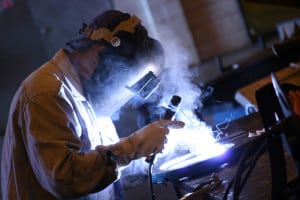 The
The 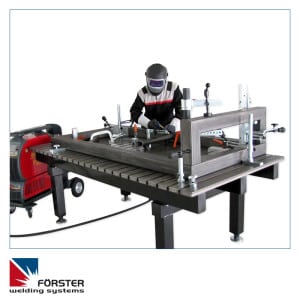
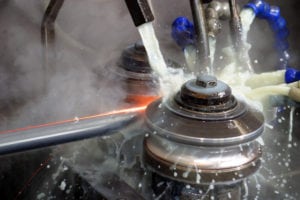
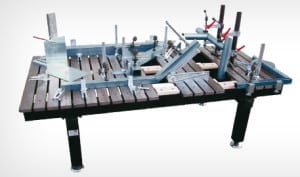 For this reason, a small shop or individual welder can get by using a single table but larger manufacturers need a lot more to meet demand. Since a standard table is not able to adapt to jobs of different sizes, a manufacturer is forced to dedicate one table to one project or one step in an assembly line. This is why more and more large manufacturers are switching over to a Forster 3-D Welding Table.
For this reason, a small shop or individual welder can get by using a single table but larger manufacturers need a lot more to meet demand. Since a standard table is not able to adapt to jobs of different sizes, a manufacturer is forced to dedicate one table to one project or one step in an assembly line. This is why more and more large manufacturers are switching over to a Forster 3-D Welding Table.